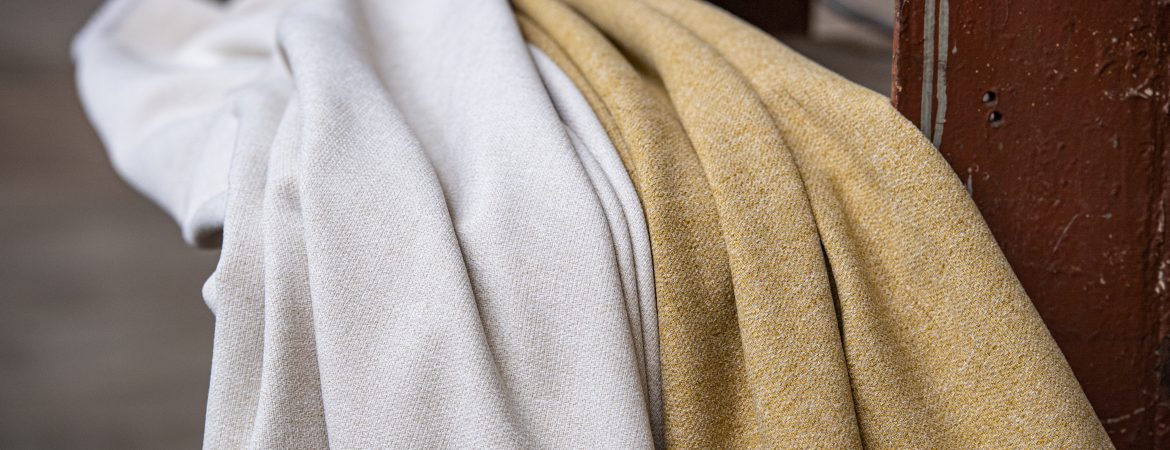
Recycling for sustainable furniture: starting with textile design
Recycling is an important aspect of textile design for sustainable furniture. You would be amazed at the possibilities of materials that we often consider as waste. Recycling is a less efficient but essential link in the path to circularity within the waste hierarchy. The importance of recycling upholstery fabrics has grown significantly in recent times, as sustainability and the circular economy have become more prominent. Recycling materials offers many benefits, both for the environment and the economy.
First and foremost, recycling upholstery fabrics can contribute to reducing the waste burden. Many upholstery fabrics currently end up in landfills or are incinerated, which is harmful to the environment and our health. By recycling these fabrics, we can reduce the amount of waste generated and limit the emission of harmful substances. Additionally, recycling upholstery fabrics can help reduce CO2 emissions. The recycling process requires less energy compared to producing new fabrics because the production phase has already taken place. By recycling upholstery fabrics, we can save energy and reduce CO2 emissions.
Furthermore, recycling upholstery fabrics can provide economic benefits. It can contribute to the emergence of new businesses and jobs in the recycling sector, thereby supporting economic growth.
Complexity of recycled textiles
Recycling upholstery fabrics can be challenging because they are often part of larger furniture pieces that incorporate other materials such as wood, metal, and adhesives. It can be difficult to separate these different materials to recycle them individually.
Moreover, upholstery fabrics are often treated with coatings, dyes, and other chemicals, making it challenging to recycle them without compromising the quality or safety of the end product.
Additionally, upholstery fabrics are often composed of different types of fibers, such as cotton, wool, polyester, and nylon. It is difficult to separate these fibers and recycle them individually, which can make it challenging to produce high-quality recycled textiles.
Types of recycling for sustainable furniture
Thermal and Mechanical Recycling: Thermal recycling utilizes heat to process waste materials. It involves incineration, gasification, or pyrolysis of waste at high temperatures, with the released heat being used to generate energy or produce materials. It can be used for various types of waste, including organic waste, biomass, and certain types of plastic waste.
On the other hand, mechanical recycling is a process where waste materials are sorted, shredded, and cleaned to be processed into new products. It involves steps such as sorting based on material type, grinding or shredding the waste, and washing to remove impurities. The recycled material can then be used as a raw material for the production of new products. Mechanical recycling is commonly applied to plastic packaging, paper, cardboard, glass, and metals.
Chemical Recycling: This involves using chemical processes to break down old fabrics into their original components, which are then used to produce new fabrics.
Biological Recycling: This involves the use of biodegradable materials that can be broken down through natural processes such as composting.
By employing these recycling techniques, old upholstery fabrics can be transformed into new, high-quality sustainable furniture, reducing waste and pollution in the furniture industry.
Upcycling in sustainable furniture
Upcycling is an approach to recycling where waste materials are transformed into products of higher quality, value, or functionality than the original material. The process involves creatively transforming waste materials into unique and sustainable furniture. Unlike traditional recycling, which processes materials into new raw materials, upcycling aims to create products that are superior to the original materials. Upcycling reduces the demand for new raw materials, decreases waste, and encourages innovation in reuse. It promotes a circular economy and encourages rethinking waste to give materials a second life.
Circular Design
Circular design is textile design focused on creating products and systems that operate within the principles of a circular economy. The goal is to extend the lifespan of products, use resources efficiently, and minimize waste. Circular design considers the entire lifecycle of a product and applies principles such as value retention, use of renewable and recycled materials, local production and distribution, repair, and recycling. It promotes sustainability and minimizes the impact of production and consumption on the environment. In essence, embarking on the path toward a circular economy in sustainable furniture requires initiating the sustainability process right from the inception of textile design.